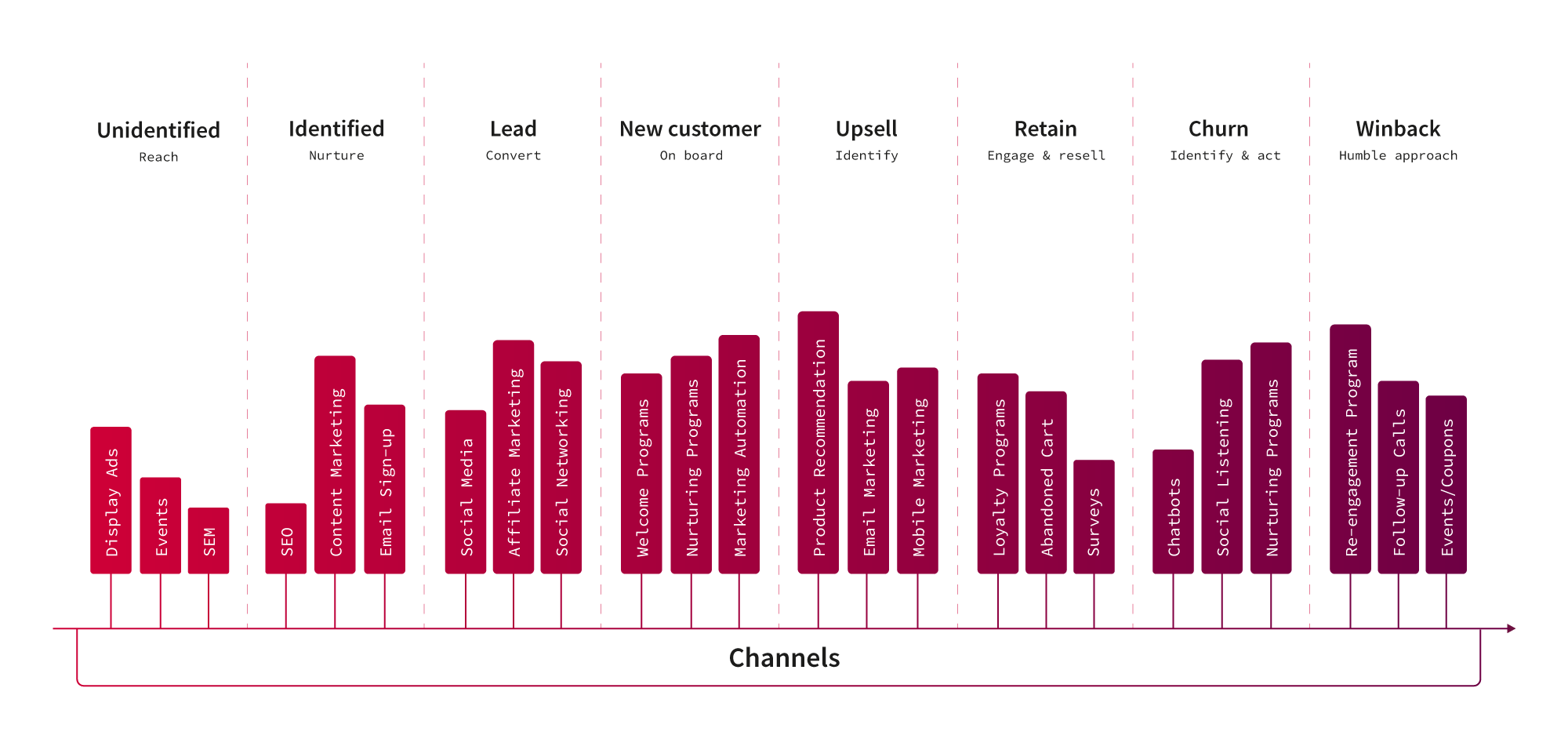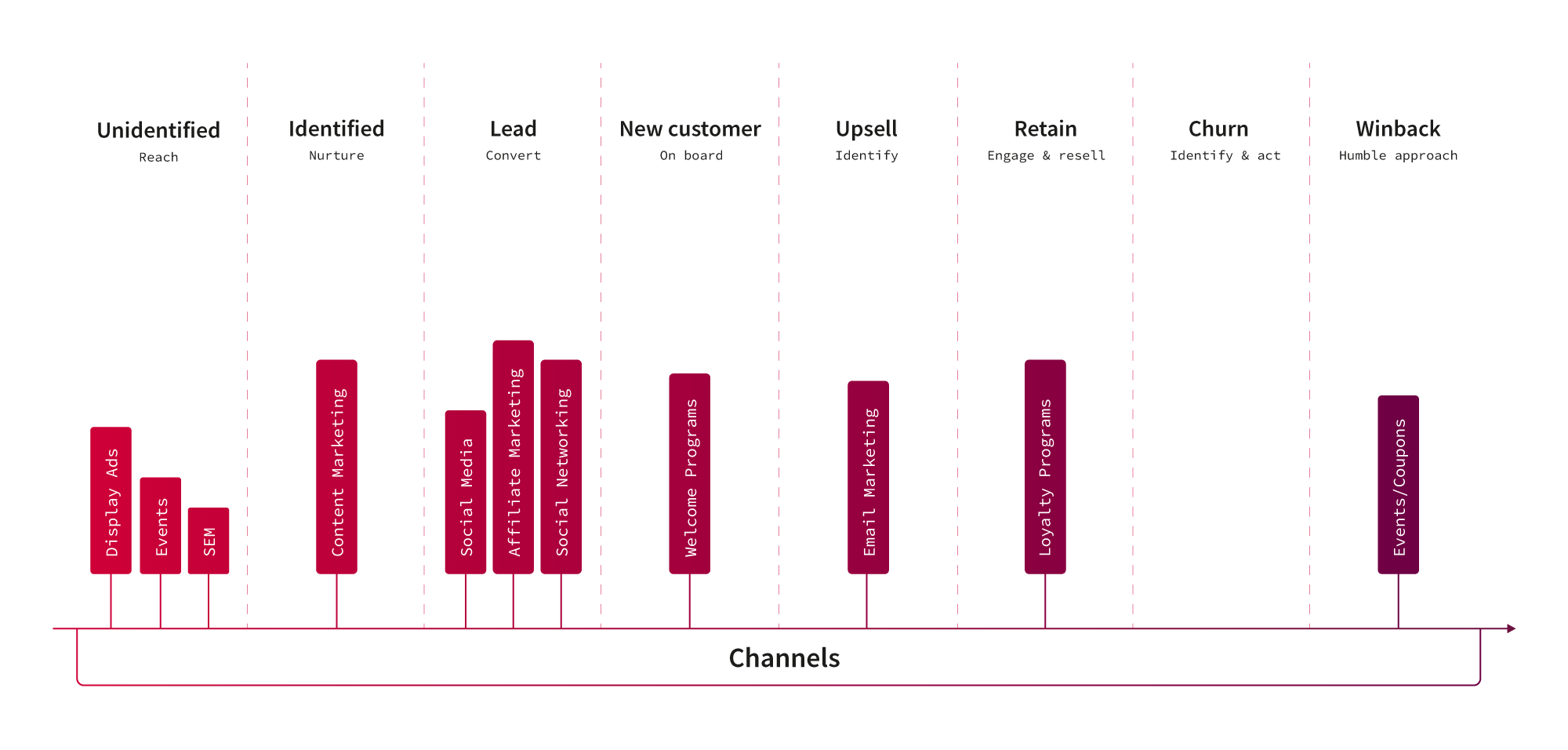Blog
25/04/2019
The customer journey stages we tend to forget
3 minute read
Companies typically focus on a few obvious marketing strategies like raising brand awareness, and converting and welcoming new customers. Unused marketing potential can be identified through a gap analysis, which taps into the vision of a perfect customer journey and reveals the truth of current marketing activities. With data and technology, it is possible to identify and connect with customers holistically throughout the customer journey.
Customer journeys: Too complex to follow?
‘Customer journey’ is a term used to describe the customer’s experiences throughout the lifecycle of a customer relationship. It includes the initial contact, engagement and transition into a long-term relationship. The stages of a customer journey vary depending on the company and its products or services — and a customer can be in different stages with different products from the same company. For example, a member of a gym chain might be an active user of the studio but is only a lead for the studio’s personal training services.
Because customer journeys can be complex, we easily tend to concentrate on just a few easily distinguishable stages like attracting new leads, welcoming new clients or activating passive customers. Many companies get interested in marketing automation because they want to create automated processes for these obvious stages. This is a good start, but a lot of marketing potential is hidden in the forgotten stages of the customer journey.
–> Learn more: Creating Value with Intelligent and Data-driven Marketing Automation

Old is gold
One basic business principle is that existing clients bring more value than acquiring new customers. It is crucial to identify the holistic customer lifecycle and nurture the customer relationship throughout the entire journey. Gap analysis is a great tool for marketers who aim for a holistic experience that takes into account all possible paths within a customer journey.
The gap analysis draws two pictures: one of a perfect situation, where all stages are taken into account with relevant strategies, and another of the realistic situation with current marketing activities. It might reveal the ugly truth that your current activities focus on acquiring new customers, and the current ones are forgotten — or maybe your upsell or win-back strategies are absent.

Detect customer journey patterns with data
Data can help you detect the stage your customer is currently at on their journey. This data is needed for marketing automation and to send customers personalised messages that support their current situation. Quite often, the required data is not immediately available or is in the wrong format, which leads to needing improvements to the architecture of data flows.
Another important part of creating holistic customer journeys is a change in thinking: instead of separate campaign messages that are broadly targeted to all customers, we need to start thinking in an “always ongoing” manner and create marketing actions that support all stages of customer journeys.
–> Learn more: Harness the Power of Your Data With b2c Marketing Automation
How to get started
It might come as a shock to see how many important customer journey stages have been forgotten. Here is where prioritising becomes crucial: after listing the forgotten stages, it’s time to decide which ones to act upon first. A clear execution plan to achieve a holistic customer journey is required. We recommend the following steps:
- Start with mapping your existing marketing activities, as well as creating a picture of the perfect customer journey, where you include all the possible stages you can imagine.
- Time for the gap analysis. Compare the maps of your current activities and the envisioned perfect customer journey. At which stages are the customers taken care of? In which situations have they been “left alone”?
- Not everything can be done at once. Create a priority list of the gaps that should be filled first.
- Define what kind of data is needed to recognise when the customer is at a specific stage. Without relevant data, creating marketing automations won’t be possible.
- Plan the content and marketing activities for your new stages and proceed to implementation.

Milla Hallanoro
Marketing Automation Practice Lead
Fluido
Read next
21/05/2019
